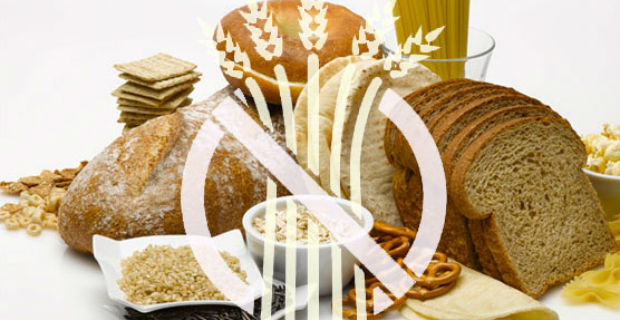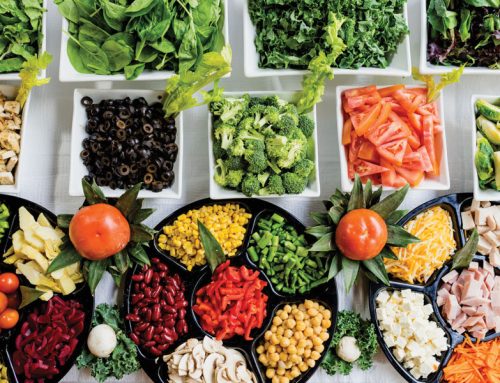WebMD Feature – By Peter Jaret, Reviewed By Louise Chang, MD
More and more groceries and health food stores stock gluten-free products. That’s good news for people with celiac disease, who for health reasons should not eat wheat with gluten.
Yet paradoxically, most of the people who reach for gluten-free products don’t have celiac disease and or even a sensitivity to wheat, Peter H.R. Green, MD, director of the Celiac Disease Center at Columbia University, told WebMD. “The market for gluten-free products is exploding. Why exactly we don’t know. Many people may just perceive that a gluten-free diet is healthier.”
In fact, it isn’t. For people with celiac disease, a gluten-free diet is essential. But for others, “unless people are very careful, a gluten-free diet can lack vitamins, minerals, and fiber,” says Green.
Celiac Disease Serious, Often Undetected
Experts estimate that about 1% of Americans have celiac disease. The condition, caused by an abnormal immune response to gluten, can damage the lining of the small intestine. That, in turn, can prevent important nutrients from being absorbed.
Symptoms of celiac disease include diarrhea, anemia, bone pain, and a severe skin rash called dermatitis herpetiformis. But celiac disease often has few or no symptoms. In part for that reason, only about 5% to 10% of cases are diagnosed in the U.S., Green says.
How can you know if you have celiac disease? The only way is to be tested. The first test is typically a blood test that detects antibodies related to an abnormal immune response. If the blood test is positive, a biopsy is performed to confirm inflammation in the lining of the small intestines.
But What If You Don’t Have Celiac Disease?
Some people may be sensitive to gluten but don’t have outright celiac disease. These people may feel better on a diet with less gluten.
So what’s wrong with the rest of us trying a gluten-free diet a try to see how we feel?
For starters, going gluten-free means saying no to many common and nutritious foods. Gluten is a protein found in wheat, barley, and rye. Gluten also shows up in many whole grain foods related to wheat, including bulgur, farro, kamut, spelt, and triticale (a hybrid of wheat and rye). Some celiac disease experts warn patients to steer clear of oats, as well.
Gluten itself doesn’t offer special nutritional benefits. But the many whole grains that contain gluten do. They’re rich in an array of vitamins and minerals, such as B vitamins and iron, as well as fiber. Studies show that whole grain foods, as part of a healthy diet, may help lower risk of heart disease, type-2 diabetes, and some forms of cancer. The 2010 Dietary Guidelines for Americans recommends that half of all carbohydrates in the diet come from whole grain products.
To be sure, a few whole grains don’t contain gluten, including amaranth, millet, and quinoa. But they are far less common than gluten-containing grains. Meeting the dietary guidelines goal is very tough if you have to eliminate wheat, barley, rye, kamut, and other gluten-containing whole grains.
The Risks of Going Gluten-Free
Because wheat is ubiquitous in the American diet, completely eliminating gluten requires adopting a whole new diet. You would have to up most breads, crackers, breakfast cereals, conventional pastas, pastry goods, and a wide range of processed foods made with small amounts of gluten.
“And any time you eliminate whole categories of food you’ve been used to eating, you run the risk of nutritional deficiencies,” said Green. A 2005 report from the American Dietetic Association warned that gluten-free products tend to be low in a wide range of important nutrients, including B vitamins, calcium, iron, zinc, magnesium, and fiber.
There’s little point in taking that risk unless you genuinely have celiac disease or gluten sensitivity. “Eating a healthy gluten-free diet means paying constant attention to what you eat. This isn’t something that anyone should do casually,” said Green.
There’s also little point in eliminating just some gluten. For people who are sensitive, even trace amounts can cause damage to the small intestines. “So an almost gluten-free diet isn’t going to help if you have a problem.”
Choosing gluten-free foods has another drawback. Most gluten-free alternatives, such as pasta and bread, are significantly more expensive than their conventional counterparts. A 2007 survey conducted by Green and his colleagues found that gluten-free pastas and breads were twice the price of conventional products, for instance.
The bottom line: If you think you may have a problem with gluten, get tested.
Making Smart Choices on a Gluten-Free Diet
Thanks to the increasing selection of gluten-free foods, it has become far easier for people with true gluten problems to eat healthy diets. “People who have had [celiac] disease for 15 and 20 years are astounded at the selection of gluten-free foods out there,” Green said.
Unfortunately, not all the foods being marketed are healthy. Some are high in saturated fat or cholesterol. Others may be high in calories but contain very little in the way of nutrition. A slew of herbal remedies have also hit the market, promising to ease gluten sensitivity. There’s little evidence that any of them help, Green said.
The basis of a healthy gluten-free diet, as with any diet, should be natural foods. Lean meats and fish, fruits and vegetables, and low-fat dairy products are all safe for people with celiac disease. Grains that don’t contain gluten, such as quinoa and amaranth, are another healthy option. More and more products are being made with such grains, from breads and breakfast cereals to pastas.
Clinical trials are currently under way of drugs that may help ease celiac disease. A vaccine for celiac disease is also under investigation.
Even if such approaches work, they aren’t likely to cure the condition entirely, however. “The treatments under investigation are probably going to be useful mostly for lessening the damage caused by occasional lapses in the diet,” Green said. People with celiac disease will continue to have to eliminate wheat products from their diet. Fortunately, growing awareness of the prevalence of these conditions should continue to make that challenge easier.
Source: http://www.webmd.com/diet/healthy-kitchen-11/truth-about-gluten?
With that being said, gluten free doesn’t always mean carb free.
The Difference Between Gluten and Carbohydrates
Gluten is a protein that is found most commonly in wheat, though related grains like barley and rye also contain it. Healthy people are usually able to process this protein as a part of normal digestion, but some individuals have sensitivities or allergies that prevent the body from breaking it down, in many cases leading to nausea and intestinal discomfort or other symptoms. Avoiding gluten entirely is usually the best way for these people to stay healthy, but adopting a low-carb diet is rarely ever required.
Wheat is a carbohydrate, but it is only one of many. Any food labeled gluten-free is guaranteed to contain no traces of wheat, barley, or related grains, though it could very well contain other carbs like white sugar or rice. As such, claiming that a gluten-free food is also a low carb food may be true in some cases, but it is in no way a universal rule.
People who are hoping to lose weight often adopt low-carb diets. Carbohydrates are “simple” energy sources, which means that they are converted quickly to glucose, a blood sugar. Forcing the body to get energy from more complex food sources, like meat or unrefined grains, often improves metabolic efficiency, which in turn can burn more calories and lead to weight loss over time. It can be tempting to think that wheat-free foods are diet-friendly, but a quick look at their health attributes shows that this not always the case.
Source: http://www.wisegeek.com/are-gluten-free-foods-also-low-carb.htm







